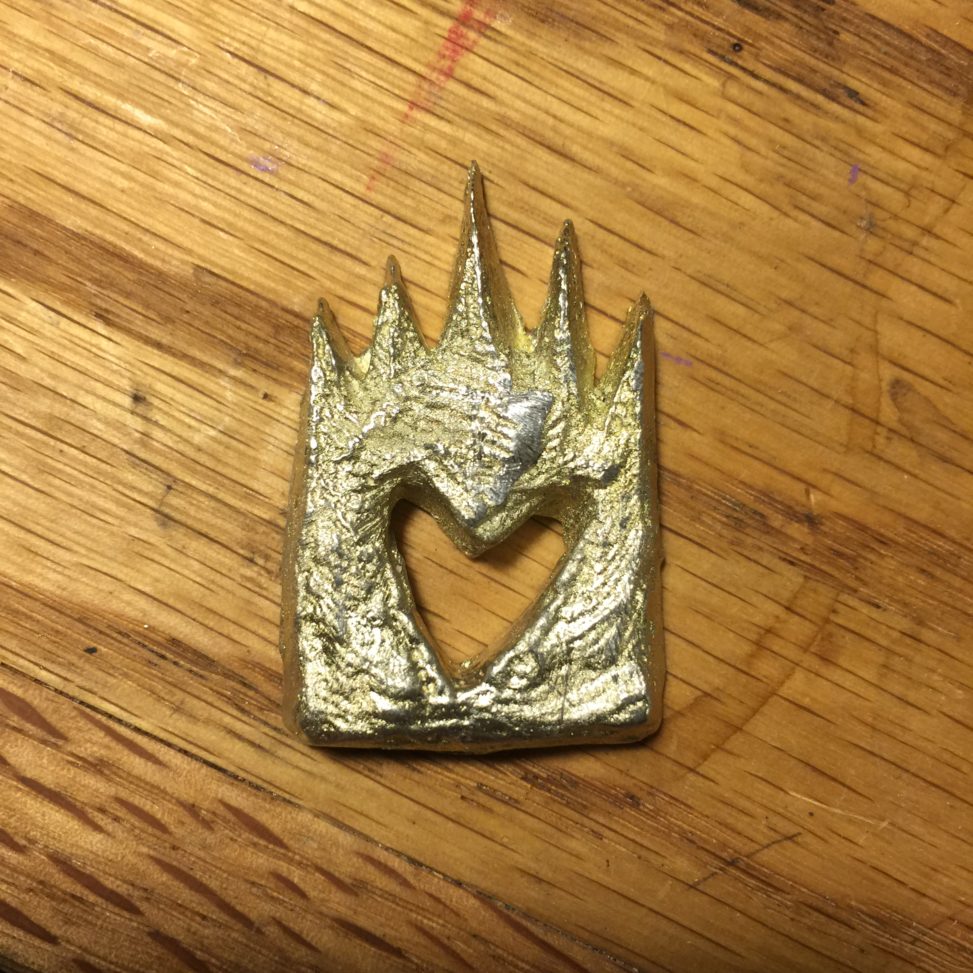OBJECTIVE: To introduce relief sculpture and to continue discussion on the differences between 2D and 3D space through making a pewter cast amulet.
PROCESS:
- Sketch ideas for your amulet. It should be no larger that 1.5” x 1.5” x 0.5”. What is the amulets theme? What does it protect against or provide for?
- Cut your cuttlebone in half and sand one side on each half flat.
- Transfer your sketch to one flat side of the cuttlebone.
- Make sure to carve in a pour cup and relief vents.
- Tie your mold sides together with tape and put your name on it.
- Follow the instructor’s instructions for casting your amulet.
- Finish your amulet by sanding and filing.
VOCABULARY: bas (pronounced “bah” as in French) relief (low relief), haut (pronounced “oh”) relief (high relief), texture, additive, subtractive, volume reversal, negative, positive, sand casting
REFERENCES: Paolo Soleri, Rachel Whiteread
MATERIALS: Cuttlefish bone, Carving Tools, Pewter
COMMUNITY: If you have wheels, try to visit Cosanti in Scottsdale (www.cosanti.com) or Arcosanti in Cordes Junction (www.arcosanti.org)
NOTES: An amulet (from Latin amuletum; earliest extant use in Naturalis Historia [Pliny], meaning “an object that protects a person from trouble”), a close cousin of the talisman (from Arabic طلاسم tilasm, ultimately from Greek telesma or from the Greek word “telein” which means “to initiate into the mysteries”) consists of any object intended to bring good luck and/or protection to its owner. Potential amulets include: gems, especially engraved gems, statues, coins, drawings, pendants, rings, plants, animals, etc.; even words said in certain occasions—for example: vade retro satana—(Latin, “go back, Satan”), to repel evil or bad luck. For example: A crucifix, Medals (featuring saints, gods, etc), A specific animal with cultural or religious significance, Clover, Boat, Wheel, Raven, Head, Acorn, Well, Sun, pebbles, tablets, bells, hammer, specific materials, gemstones, text, etc.



